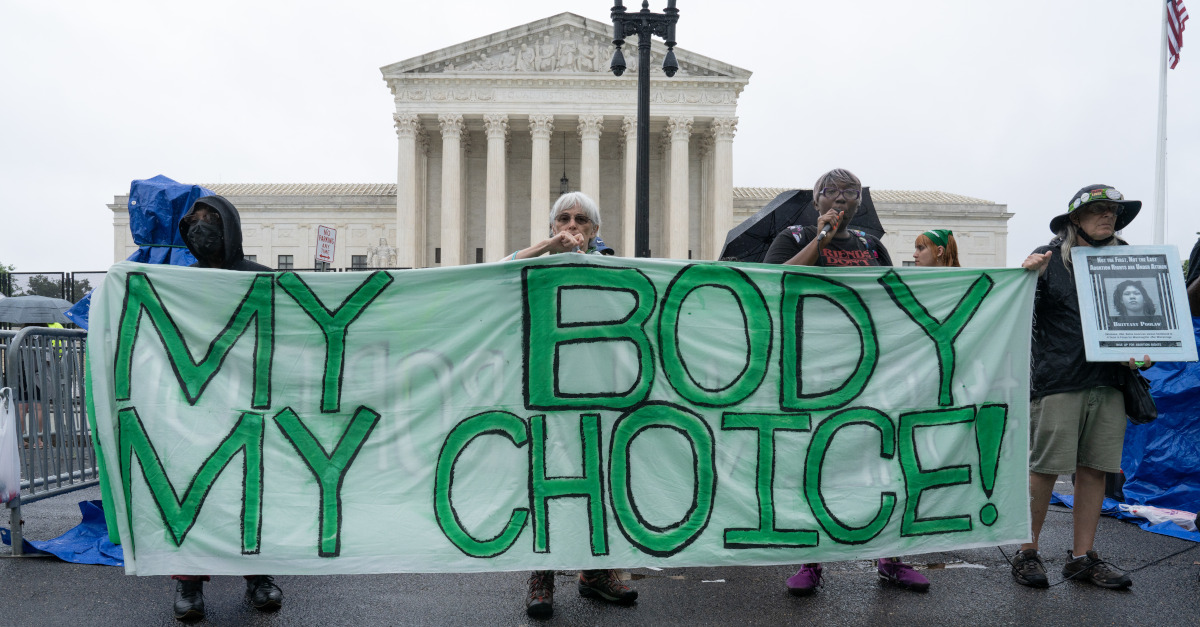The concept of “my body, my choice” refers to the belief that individuals have the right to make decisions about their own bodies and healthcare without interference from others. This includes the right to access birth control and abortion, as well as the right to refuse medical treatment.
The phrase “my body, my choice” is often used in the context of reproductive rights and the fight for reproductive justice. It highlights the importance of autonomy and agency in decision-making, particularly when it comes to reproductive health. The concept is closely linked to the idea of bodily autonomy, which refers to the belief that individuals have the right to control their own bodies and make decisions about what happens to them.
The phrase “my body, my choice” has become a rallying cry for those advocating for reproductive rights, particularly in the face of efforts to restrict access to abortion and other reproductive healthcare services. It emphasizes the importance of respecting an individual’s right to make decisions about their own body and healthcare, and the need to support and defend that right.
The history of reproductive rights is long and complex, with significant efforts to secure and expand access to reproductive healthcare services dating back centuries. Here are a few key events and milestones in the history of reproductive rights:
- 1873: The Comstock Act is passed in the United States, making it illegal to distribute birth control or information about birth control.
- 1916: Margaret Sanger opens the first birth control clinic in the United States. She is arrested for violating the Comstock Act, but her efforts pave the way for the eventual legalization of birth control.
- 1960: The Food and Drug Administration (FDA) approves the first oral contraceptive pill, which becomes widely available in the United States in the following years.
- 1965: The Supreme Court case Griswold v. Connecticut strikes down a state law that banned the use of birth control, ruling that the right to privacy includes the right to access birth control.
- 1973: The Supreme Court case Roe v. Wade legalizes abortion nationwide in the United States.
- 1989: The Supreme Court case Webster v. Reproductive Health Services upholds the right of states to restrict access to abortion, leading to a wave of state-level abortion restrictions.
- 2010: The Affordable Care Act (ACA) is passed in the United States, requiring most insurance plans to cover birth control without co-payments.
The history of reproductive rights is marked by both progress and setbacks, and the fight for reproductive justice continues today. Despite significant gains, access to reproductive healthcare is still limited for many individuals, particularly those from marginalized communities. It is important to continue to work towards expanding and protecting reproductive rights for all.
Restricting reproductive rights can have severe consequences on marginalized communities. These consequences can include:
- Increased unintended pregnancies: When individuals do not have access to affordable and accessible birth control, they may be more likely to have unintended pregnancies. This can have significant financial, physical, and emotional consequences for individuals and families.
- Higher rates of abortion: When access to abortion is restricted, individuals may be more likely to turn to unsafe methods to end their pregnancies. This can lead to higher rates of complications and death, particularly in communities where access to quality healthcare is already limited.
- Disproportionate impact on low-income individuals and people of color: Restrictions on reproductive rights often disproportionately affect low-income individuals and people of color, who may not have the means or resources to access reproductive healthcare services in other states or countries.
- Stigma and discrimination: Individuals seeking reproductive healthcare may face stigma and discrimination, which can make it even harder for them to access the care they need. This can also lead to a lack of trust in the healthcare system and discourage people from seeking care.
- Negative impacts on economic and social mobility: The consequences of unintended pregnancies and restricted access to reproductive healthcare can have long-term impacts on individuals’ economic and social mobility. This can contribute to the perpetuation of inequality and disadvantage in marginalized communities.
It is essential that we work towards expanding and protecting reproductive rights for all, in order to promote the autonomy, agency, and well-being of marginalized communities.
Voting for politicians who support reproductive rights is an important way to advocate for reproductive justice. Here are a few steps you can take to make sure you are supporting politicians who support reproductive rights:
- Educate yourself about the candidates and their positions: It’s important to know where candidates stand on reproductive rights and other issues that are important to you. You can do this by looking at their campaign websites, reading news articles about them, and attending candidate forums or debates.
- Look for endorsements from reproductive rights organizations: Organizations that advocate for reproductive rights, such as Planned Parenthood and NARAL Pro-Choice America, often endorse candidates who support their values. You can check out their endorsements to see which candidates they support.
- Consider the candidate’s track record: Look at a candidate’s past actions and votes on reproductive rights issues. This can give you a sense of their commitment to reproductive justice and whether they are likely to support policies that protect and expand reproductive rights.
- Engage with candidates and their campaigns: Reach out to candidates and their campaigns to ask about their positions on reproductive rights. You can also attend campaign events and ask questions about their stance on these issues.
By voting for politicians who support reproductive rights, you can help ensure that your values are reflected in the policies and laws of your community. It’s important to remember that reproductive rights are just one issue to consider when deciding who to vote for, and it’s important to consider a candidate’s stance on a range of issues that are important to you.
In conclusion, the importance of continuing to fight for reproductive rights cannot be overstated. Reproductive rights are fundamental human rights, and the right to make decisions about one’s own body and healthcare is essential to individual autonomy and agency.
Despite significant progress in the fight for reproductive justice, access to reproductive healthcare is still limited for many individuals, particularly those from marginalized communities. Restrictions on reproductive rights can have severe consequences, including increased unintended pregnancies, higher rates of abortion, stigma, and discrimination, and negative impacts on economic and social mobility.
It is essential that we continue to work towards expanding and protecting reproductive rights for all. This includes supporting organizations that advocate for reproductive rights, voting for politicians who support these rights, educating ourselves and others about reproductive rights issues, and participating in activism and advocacy efforts. By continuing to fight for reproductive rights, we can work towards a world where all individuals have the freedom and agency to make decisions about their own bodies and healthcare.
Free Speech and Alternative Media are under attack by the Deep State. Real News Cast needs reader support to survive. Please Contribute via GoGetFunding



